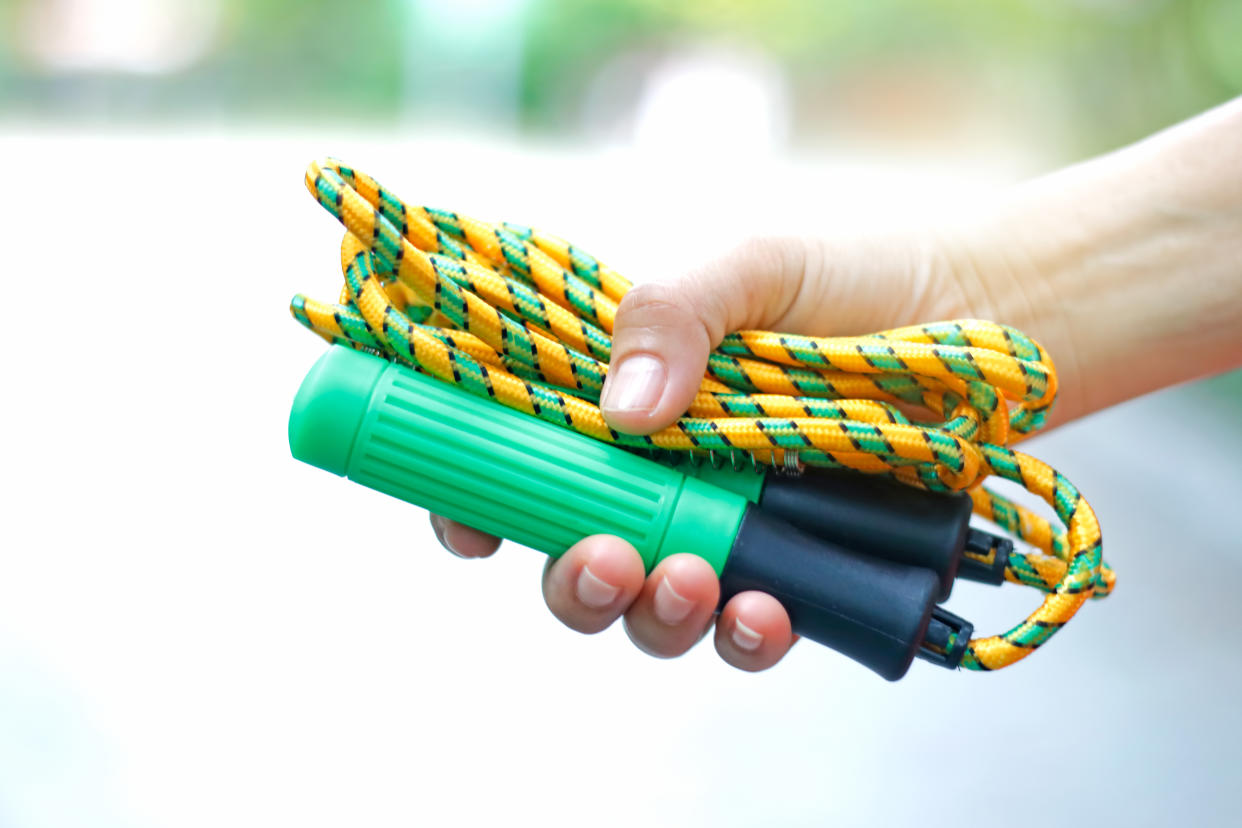It's cheap. It's easy. You did it as a kid. Should jumping rope be your next workout?

Long before Peloton products, kettlebells and Pilates machines became a part of your workout arsenal, your go-to exercise equipment might have been nothing more than a basic jump rope. As kids, fitness meant skipping in the driveway, playing Double Dutch with friends or trying not to trip up in gym class as phys ed teachers guided us through choreographed routines.
It was sweaty, it was simple — and it might be worth revisiting as an adult. While you may have moved on from the playground, there’s still lots to like about this heart-pumping workout. Here’s what to know — and why you may want to make jumping rope your new favorite cardio.
Why fitness pros love jumping rope
Ronny Garcia is a personal trainer at Blink Fitness and a fan of jumping rope, which he says makes for a nice alternative to “the dreaded burpees” when it comes to getting the heart pumping.
In addition to boosting cardiovascular health, jumping rope makes for a full-body workout that’s also “an efficient way to burn calories,” Garcia tells Yahoo Life. And according to Adam Cardona, a personal trainer and leader of Elite Healers Sports Massage, jumping rope keeps your calves poised and your wrists constantly rotating during the exercise, which means you’re also working on your muscle stamina and endurance with every skip.
Personal trainer Tom Berry tells Yahoo Life that jumping rope is a plyometric activity, meaning it involves explosive movements that increase muscle power and strength. It also develops your coordination and balance — which can be great for preventing fall-related injuries, especially as you age.
How to get started
You don’t need a ton of space for this workout, but you do need the right rope. Garcia says that when jumping rope, “length and weight do matter.” To find your perfect rope length, he says, “stand with one foot on the middle of the rope and pull up the handles,” which should reach your armpits.
“To begin, you’ll want a lightweight rope,” Garcia explains. “As you gain experience you may want to switch to a weighted rope for a challenge.”
The proper shoes are also important in order to avoid injury, says Cardona. “Try using a cushioned sneaker like a cross-training or basketball sneaker to absorb the impact,” he says.
Finding the ideal spot to jump rope is also crucial. In order to avoid too much pressure on your joints, Garcia recommends going for a gym floor, which has more cushion than concrete. However, if you do need to jump rope outside in a driveway or other hard surface, you can put down an exercise mat for extra padding.
What’s the right way to jump rope?
Jumping rope may feel like an exercise even kids can do, but it is certainly possible to injure yourself, as it’s easy to trip up when skipping along.
Berry says that those with preexisting injuries like Achilles pain or a recently sprained ankle should avoid jumping rope. Cardona adds that those with stiff ankle, knee or hip joints may also struggle with jumping rope, as “the impact of the weight on these joints can really be tough on the body if you are not used to it.”
It’s important to use proper form when jumping rope. To that end, Garcia recommends the following steps:
Stand up straight with your shoulders relaxed and your elbows close to your body.
Hold the handles with a light but firm grip; your wrists should be just above your hips.
Keep your jumps low and on the balls of your feet.
Slightly bend your knees while jumping.
Do this, and you’ll get your heart pumping. Wouldn’t your old P.E. teacher be proud?


